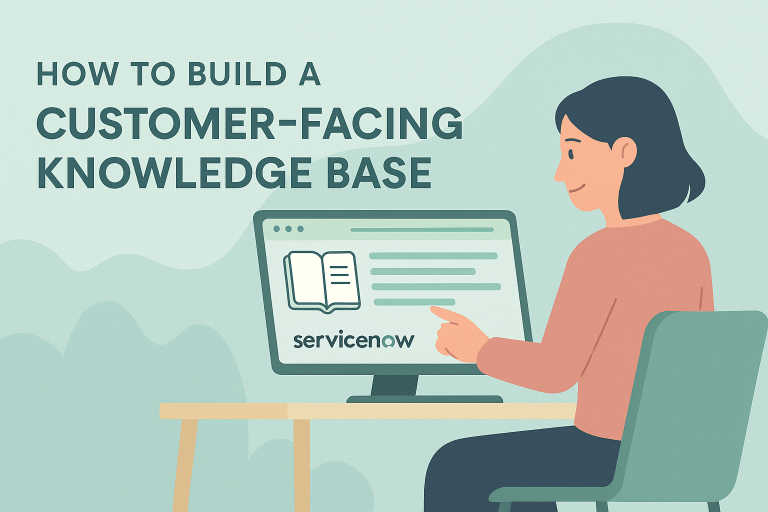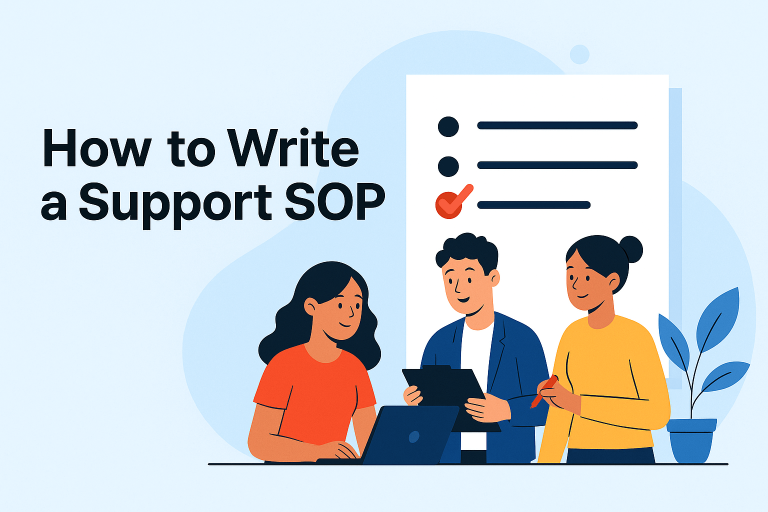Support Operations Insights
At Opsaris, we write practical, real-world guides for support leaders. Whether you’re assessing SLAs, improving documentation, or managing your team to enable better flow, these support operations insights are designed to help you build scalable, ITIL-aligned operations.

The Tiered Support Model: How to Structure Your Support Team for Flow and Escalation
When every issue lands on the same desk, things slow down. The tiered support model solves this by distributing responsibility, creating clearer escalation paths, and improving resolution speed — but only if it’s designed with care. In this guide, we’ll explain what a tiered support model is, when to use one, and how to structure…

How to Structure an Effective Support Escalation Process
If your support team ever feels like it’s constantly passing the pain upwards, your support escalation process might be the problem. A well-structured escalation process isn’t just about moving tickets to Tier 2 or Dev — it’s about creating clarity, preserving response times, and making sure issues land in the right hands with the right…

How to Increase Support Team Capacity Without Just Hiring More People
“We’re stretched too thin — we need more people.” Maybe. But maybe not. In support operations, increasing headcount isn’t the only lever to increase support team capacity. Often, capacity issues come not from how many people you have — but from how those people are being used. Before you reach for the hiring budget, it’s…

How to Build a Customer-Facing Knowledge Base That Actually Helps
Some support tickets should never have been raised — not because they weren’t valid, but because the answer already existed… just not where the customer could find it. A well-structured customer-facing knowledge base (KB) is one of the most scalable ways to: And if your organisation is adopting a platform like ServiceNow, you already have…

How to Build an Internal Knowledge Base That Actually Gets Used
You’ve probably written documentation before.Maybe even set up a team wiki or already contributed to an internal knowledge base. But if your support team still prefers to ask a colleague (or Slack, or Teams), it’s not working. And when that happens, valuable knowledge stays locked in people’s heads — not in your systems. Here’s how…

Your First Week as a Support Manager: Where to Start (and What to Fix First)
So you’ve just stepped into a new role as a support manager. Maybe you’ve been promoted internally. Maybe you’re walking into a new company. Either way, it’s likely you’ve inherited a few things: It’s tempting to jump straight into fixing things — or worse, pretending you already know what’s going on. But your first week…

7 Support KPIs That Matter (And How to Actually Use Them)
Let’s face it — support teams are drowning in data. We measure ticket volume, resolution times, CSAT scores, backlog size… but are we actually learning anything from them? In many teams, KPI tracking becomes a box-ticking exercise: numbers get updated, dashboards look pretty, but nothing meaningful changes. If that sounds familiar, you’re not alone. In…

How to Write a Support SOP That Actually Gets Used
If your team has support SOPs but no one reads them…You don’t have SOPs — you have clutter. Standard Operating Procedures are supposed to bring clarity, consistency, and confidence. But in too many support teams, they sit untouched in a dusty folder, or worse — they exist only in someone’s head. Here’s the truth:A good…
Support Operations SLA Tracker: Build and Optimize Your SLA Monitoring Framework
In support operations, SLAs (Service Level Agreements) aren’t just contractual—they’re a reflection of team performance, customer experience, and operational maturity. Without proper tracking, even the best teams can fall into a reactive mode—missing commitments, over-promising, or under-communicating. An SLA tracker turns assumptions into visibility. It helps support leaders pinpoint trends like response delays, systemic escalations,…

Empowering Your Support Heroes: Building a Culture of Ownership and Accountability
We often talk about processes and technology when optimising support operations. We dissect workflows, implement new tools, and track key performance indicators. But at the heart of any successful IT support team lies its people. Are your support professionals simply reacting to tickets, or are they truly invested in resolving issues and driving positive outcomes?…
